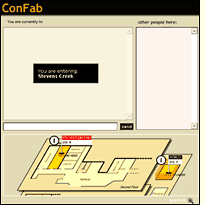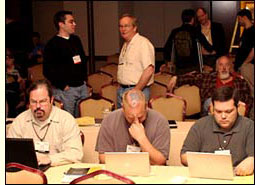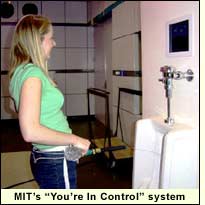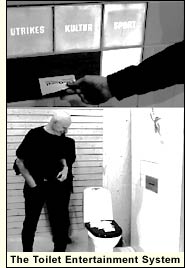Big Beef vs. Small Children
April 29th, 2003
I love a filet mignon or a backyard cheeseburger. But the more I learn about the huge corporations behind today’s American beef, the guiltier I feel about financing them.
Consider Cool to be Real, a Web site funded by the big American cattlemen’s lobby and designed to persuade little girls to spend more time stuffing their faces with beef.
The site poses as a health, fitness and nutrition resource. It encourages partaking in “Nutrition-To-Go,” which means gulping down foods like chili and cornbread, and barbeque beef sandwiches. “Smart Snackin’ recipes” include “Beef Taco and Cheese Pockets,” “Beef on Bamboo,” and “Pizza Pie with Mashed Potatoes.”
More choice cuts from the site:
“‘Real Girls’ are busy and need lots of energy. You can get that extra energy and build muscle – which helps your metabolism – by eating regularly, at least every three to four hours. Be sure to get both protein and carbs in every meal. Enjoy a beef wrap for lunch or spaghetti and meatballs for dinner.”
“As energy requirements increase, so should protein intake. Chow down!“
I don’t want to pay these dirtbags another cent of my money. But how can I find American beef that’s not affiliated with this site? Won’t I have to give up cheeseburgers, or order my beef from New Zealand? Not for long. I hope.
Imagine: when networked wireless devices with cameras are cheap and widely used, I’ll be able to take a quick snapshot of the label on the meat that I’m considering purchasing, right there in the supermarket. Server-side software can scan the UPC code and match it to records in a database of food producers, distributors and retailers.
The database, maintained by journalists or concerned citizens, can spit back the information that I want — in this case, whether the people who brought me this package of meat helped to finance “Cool to be Real.” And whether they irradiate their meat. And whether they shoot up their animals with dangerous drugs and hormones.
At my PC, I can specify which criteria concern me. At the supermarket, I can scan a product with my device and then see a thumbs-up or a thumbs-down, based on what matters to me.
Already we have technology that can do all of this. To make it happen we just need enough interested people to build it out, enough concerned consumers to read up on these corporations and update the database with the facts about what goes on behind the scenes, behind the labels on the food that we eat.
In the meantime, I’ll hold off on that cheeseburger.
(Disclaimer: I didn’t come up with the vision of consumers in stores scanning UPC codes on the fly. Versions of this idea have been making the rounds for years. I’m not sure who first wrote about this idea, but it might have been Howard Rheingold in his blog or in his book Smart Mobs. )
Baby photo courtesy of Adbusters.org.
 This week’s O’Reilly
This week’s O’Reilly  Many of them are engaged in online chat rooms.
Many of them are engaged in online chat rooms.  People collaborate to take notes on the presentations and discussions using
People collaborate to take notes on the presentations and discussions using 

 The grad school decision: My quest for a Human-Computer Interaction (HCI) Master’s degree continues. I was accepted by four great Information Management & Systems schools: Berkeley, The University of Michigan, The University of North Carolina at Chapel Hill, and The University of Washington. For reasons I won’t go into, this was an unbelievably difficult decision, but after talking to and exchanging e-mails with more than 25 professors, students, and people in the industry, and after spending countless hours reading related Web sites, papers, etc., I chose
The grad school decision: My quest for a Human-Computer Interaction (HCI) Master’s degree continues. I was accepted by four great Information Management & Systems schools: Berkeley, The University of Michigan, The University of North Carolina at Chapel Hill, and The University of Washington. For reasons I won’t go into, this was an unbelievably difficult decision, but after talking to and exchanging e-mails with more than 25 professors, students, and people in the industry, and after spending countless hours reading related Web sites, papers, etc., I chose  CHI 2003: I gathered a lot of this knowledge during the
CHI 2003: I gathered a lot of this knowledge during the  The new gig: Last month I started my new full-time job at Stanford University’s Department of Dermatology. Among other duties, I’ll help to manage the input, cataloguing, storage, and retrieval the thousands of digital images that the department creates every month, as well as the associated medical records. It’s great fun so far; I’m the only computer person in the department, but the doctors and staff are super-smart and they seem much more open to change and to new technology than the users I worked with during two other medical gigs. I hope to pool efforts with people elsewhere on campus working on cool medical informatics projects like the
The new gig: Last month I started my new full-time job at Stanford University’s Department of Dermatology. Among other duties, I’ll help to manage the input, cataloguing, storage, and retrieval the thousands of digital images that the department creates every month, as well as the associated medical records. It’s great fun so far; I’m the only computer person in the department, but the doctors and staff are super-smart and they seem much more open to change and to new technology than the users I worked with during two other medical gigs. I hope to pool efforts with people elsewhere on campus working on cool medical informatics projects like the